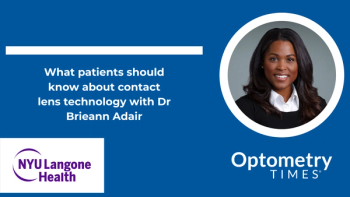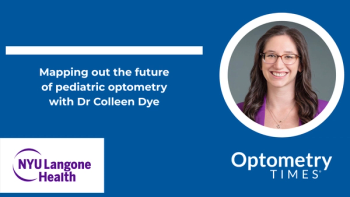At the Controversies in Modern Eye Care meeting in Los Angeles, California, which took place May 4, 2025, Jacob Lang, OD, FAAO, director of dry eye services at Associated Eye Care in the Twin Cities metro area of Minnesota, shared his perspective on one of the most exciting advancements in vision care: pharmacologic correction for presbyopia.
A new frontier in presbyopia management
Key takeaways for optometrists:
- Pharmacologic presbyopia treatments offer patients increased flexibility and lifestyle freedom.
- Motivation and expectation management are crucial in identifying good candidates.
- Provider education is a significant barrier—many ODs remain unaware of new options.
- Comprehensive ocular care must remain central when prescribing presbyopia drops.
According to Lang, pharmacologic options for presbyopia represent a long-awaited shift in how eye care professionals can help patients manage age-related near vision loss. What excites him most is the flexibility these therapies offer. “Pharmacologic correction gives patients the freedom to use it when they need it," he explained. “It’s about enabling lifestyle choices and offering convenience in the busy presbyopic years.”
This shift isn’t just about avoiding reading glasses; it's about empowering patients with control over their vision, particularly those who lead dynamic personal and professional lives.
Identifying ideal candidates
Lang emphasizes motivation as the key driver when choosing candidates for pharmacologic treatment. “We're looking for patients who are motivated to do something different,” he said. These patients often want more freedom in their daily routines and are willing to try new options to achieve it. The ideal candidate is one who values the flexibility these therapies offer and has realistic expectations about their use.
Breaking down barriers
Lang also highlighted a surprising barrier: provider awareness. “One of the biggest challenges is that many doctors aren’t familiar with the available pharmacologic options,” he said. As a result, patients may not even be offered these treatments. For Lang, continued professional education and openness to innovation are critical. “We need to embrace new tools and understand how they can benefit our patients.”
Preserving comprehensive ocular health
Finally, Lang reminded attendees that any pharmacologic intervention must be grounded in sound clinical judgment. “We have to treat the entire eye, front to back. From ocular surface to retina, we’re still the doctor.” He stressed that presbyopia drops are, after all, pharmaceuticals and should be managed with the same diligence as any other ocular therapy.




















































.png)


